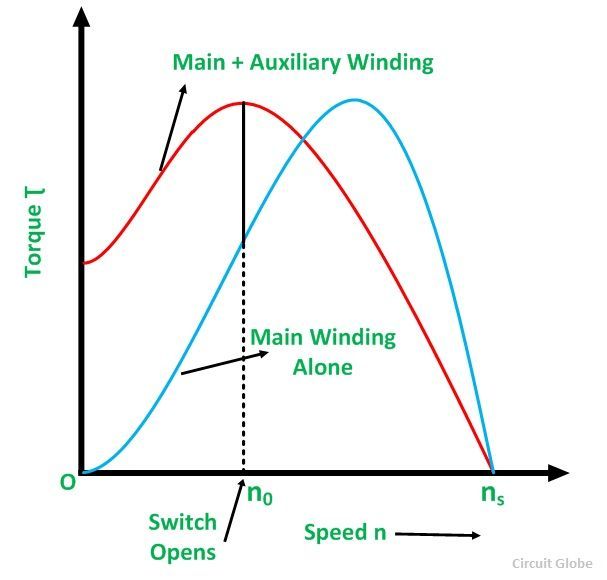- Feb 8, 2015
- 3,098
- 4,958
- 7,688
- If you're a qualified, trainee, or retired electrician - Which country is it that your work will be / is / was aimed at?
- United Kingdom
- What type of forum member are you?
- Electrical Engineer (Qualified)
Re qaz #38: 'why would they use a three phase induction motor in the first place?'
I think a possible reason might be found in the torque-speed plot below, but first study the plot for the three phase motor supplied by a Steinmetz circuit at my #32 - as the rotational speed reduces so does the torque.
For a single phase induction motor, as the speed reduces from normal running speed the torque reduces until the centrifugal switch closes whereupon the torque jumps up because it is boosted by the auxiliary winding. I am not a potter but I suppose this is undesirable - the potter would prefer to control the speed with the torque he applies with his hands and without the jump up in torque ever happening.

I think a possible reason might be found in the torque-speed plot below, but first study the plot for the three phase motor supplied by a Steinmetz circuit at my #32 - as the rotational speed reduces so does the torque.
For a single phase induction motor, as the speed reduces from normal running speed the torque reduces until the centrifugal switch closes whereupon the torque jumps up because it is boosted by the auxiliary winding. I am not a potter but I suppose this is undesirable - the potter would prefer to control the speed with the torque he applies with his hands and without the jump up in torque ever happening.









